
Roald Dahl was a British author of popular children's literature and short stories, a poet, screenwriter and a wartime fighter ace. His books have sold more than 300 million copies worldwide. Dahl has been called "one of the greatest storytellers for children of the 20th century".
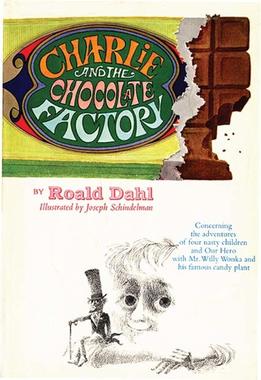
Charlie and the Chocolate Factory is a 1964 children's novel by British author Roald Dahl. The story features the adventures of young Charlie Bucket inside the chocolate factory of eccentric chocolatier Willy Wonka.
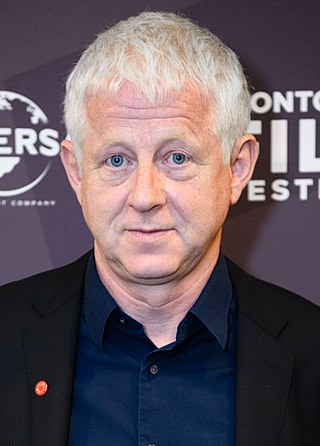
Richard Whalley Anthony Curtis is a British screenwriter, producer and film director. One of Britain's most successful comedy screenwriters, he is known primarily for romantic comedy films, among them Four Weddings and a Funeral (1994), Notting Hill (1999), Bridget Jones's Diary (2001), Love Actually (2003), Bridget Jones: The Edge of Reason (2004), About Time (2013), and Yesterday (2019). He is also known for the drama War Horse (2011) and for having co-written the sitcoms Blackadder, Mr. Bean, and The Vicar of Dibley. His early career saw him write material for the BBC's Not the Nine O'Clock News and ITV's Spitting Image.

The BFG is a 1982 children's novel by British author Roald Dahl. It is an expansion of a short story from Dahl's 1975 novel Danny, the Champion of the World. The book is dedicated to Dahl's late daughter, Olivia, who died of measles encephalitis at the age of seven in 1962.
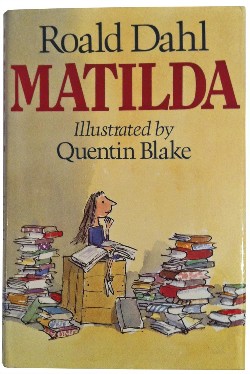
Matilda is a 1988 children's novel by British author Roald Dahl. It was published by Jonathan Cape. The story features Matilda Wormwood, a precocious child with an uncaring mother and father, and her time in school run by the tyrannical headmistress Miss Trunchbull.
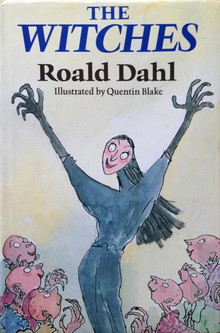
The Witches is a 1983 children's novel by British author Roald Dahl. A dark fantasy, the story is set partly in Norway and partly in England, and features the experiences of a young English boy and his Norwegian grandmother in a world where child-hating societies of witches secretly exist in every country. The witches are ruled by the vicious and powerful Grand High Witch, who arrives in England to organise her plan to turn all of the children there into mice.
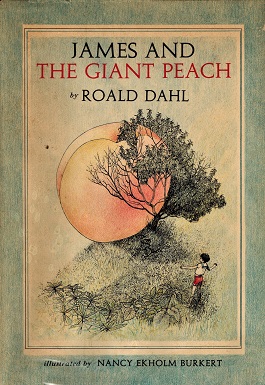
James and the Giant Peach is a popular children's novel written in 1961 by British author Roald Dahl. The first edition, published by Alfred Knopf, featured illustrations by Nancy Ekholm Burkert. There have been re-illustrated versions of it over the years, done by Michael Simeon, Emma Chichester Clark, Lane Smith and Quentin Blake. It was adapted into a film of the same name in 1996 which was directed by Henry Selick, and a musical in 2010.

George's Marvellous Medicine is a children's novel written by Roald Dahl and illustrated by Quentin Blake. First published by Jonathan Cape in 1981, it features George Kranky, an eight-year-old boy who concocts his own miracle elixir to replace his tyrannical grandmother's regular prescription medicine.

The Giraffe and the Pelly and Me is a 1985 children's book written by Roald Dahl and illustrated by Quentin Blake. The plot follows a young boy named Billy who meets a giraffe, a pelican, and a monkey, who work as window cleaners.

Esio Trot is a 1990 children's novel by British author Roald Dahl. The title is an anadrome of "tortoise". It was the last of Dahl's books to be published in his lifetime; he died just two months later.

The Wonderful Story of Henry Sugar and Six More is a 1977 short story collection by British author Roald Dahl. The seven stories are generally regarded as being aimed at a slightly older audience than many of Dahl's other children's novels.
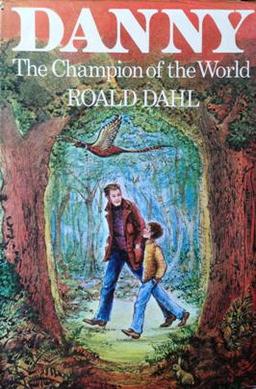
Danny, the Champion of the World is a 1975 children's novel by British author Roald Dahl. The plot centres on Danny, a young English boy, and his father, William. They live in a Gypsy caravan, fix cars for a living in their mechanic shop and partake in poaching pheasants. It was first published on February 14, 1975, in the United States by Alfred A. Knopf, Inc. and in the United Kingdom by Jonathan Cape.

Fantastic Mr Fox is a children's novel written by British author Roald Dahl. It was published in 1970, by George Allen & Unwin in the UK and Alfred A. Knopf in the U.S., with illustrations by Donald Chaffin. The first Puffin paperback, first issued in 1974, featured illustrations by Jill Bennett. Later editions have featured illustrations by Tony Ross (1988) and Quentin Blake (1996). The story is about Mr Fox and how he outwits his farmer neighbours to steal their food from right under their noses.

The Minpins is a novel by Roald Dahl with illustrations by Patrick Benson. It was published in 1991, shortly after Dahl's death in November 1990, and is the author's final work of literature. The book was republished in 2017 under the title Billy and the Minpins with new illustrations by Dahl's primary illustrator, Quentin Blake.

Roald Dahl's Guide to Railway Safety was published in 1991 by the British Railways Board. In a response to rising levels of train-related fatalities involving children, the British Railways Board asked Roald Dahl to write the text of the booklet, and Quentin Blake to illustrate it, to help young people enjoy using the railways safely. It was published a year after Dahl's death.

Rhyme Stew is a 1989 collection of poems for children by Roald Dahl, illustrated by Quentin Blake. In a sense it is a more adult version of Revolting Rhymes (1982).
Paul William Mayhew-Archer MBE is a British writer, producer, script editor and actor for the BBC. He is best known as the co-writer of The Vicar of Dibley and Esio Trot alongside Richard Curtis. His solo writing career includes My Hero and Office Gossip, which he created. He was the script editor for Old Harry's Game, Two Pints of Lager and a Packet of Crisps, Grownups, Home Again, Coming of Age and Big Top.

The Roald Dahl Treasury is an anthology of works of the children's author Roald Dahl. It was first published in the United Kingdom in 1997 by Jonathan Cape.
This is a list of artistic depictions of dyslexia.
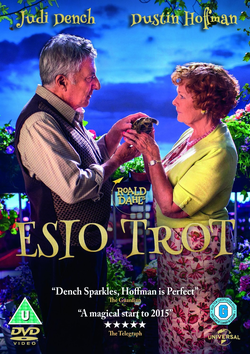
Roald Dahl's Esio Trot, or simply Esio Trot, is a British comedy drama television film directed by Dearbhla Walsh and written by Richard Curtis and Paul Mayhew-Archer, based on the 1990 novel Esio Trot by Roald Dahl. In the film, a retired bachelor falls in love with his neighbour, a widow, who keeps a tortoise as a companion after the death of her husband.

















